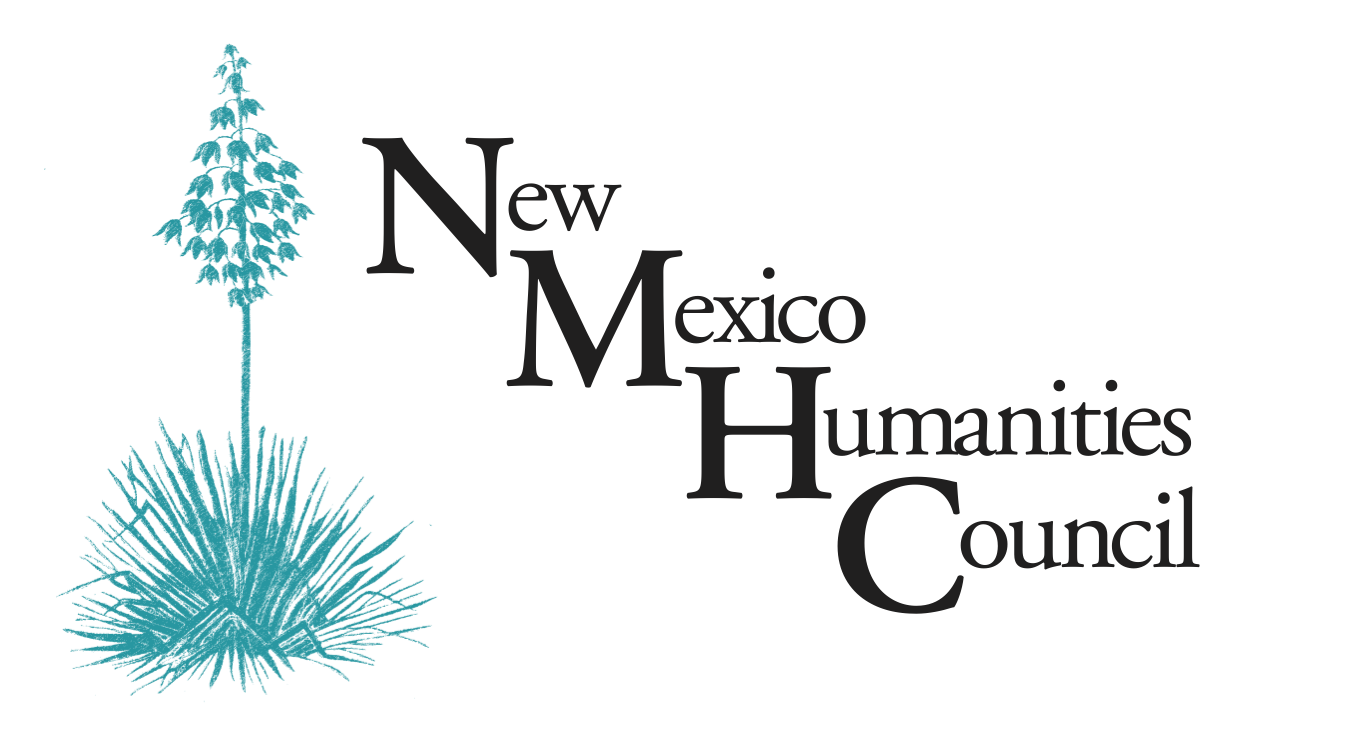A Brief History of the American Southwest for Kids ®
A six part podcast and curriculum series
A Brief History of the American Southwest for Kids
The Children’s Hour has produced a six part podcast and curriculum series on the history of the American Southwest, in partnership with the Center for New Mexico Archaeology, the Native American Community Academy (NACA), NACA Inspired Schools Network, and numerous others.
Typically a region of the US that is overlooked in textbooks, the Southwestern United States history begins 23,000 years ago in what is now know as White Sands National Park. Students will learn how the area was settled, from its Indigenous beginnings through the brutal era of Colonization by Spain, and then the United States, and finally emerging into statehood. This series highlights the moments that changed the history of this region and this nation forever.
This series comes with a free, download-able Learn-Along Guide that meets and cites US national education standards for elementary through high school students. Find it, and a link to cite the national education standards below.
Our production began with “virtual field trips” for students that include expert interviews to better understand each time period. Students can hear the full conversations with our experts by watching the field trips.
Join us, and learn about our fragile, and deeply rooted story of our high desert region over six episodes, and through our Learn-Along guide.
Downloads & Episodes
Episode 1: Footprints
We begin 23,000 years ago at what is today called White Sands National Park with footprints discovered in the sands that tell a story of a mom, her toddler, and their journey avoiding a giant sloth.
A Brief History of the American Southwest for Kids Episode 1 starts our story some 23,000 years ago at White Sands National Park, with tracks of fossilized footprints. We are joined by White Sands Resource Program Manager David Bustos, archeologist Mary Weahkee from The New Mexico Office of Archeological Studies, and Diego Medina, Tribal Preservation Officer for the Piro-Manso-Tiwa tribe, located near White Sands.
The footprints preserved in the sand reveal days in the lives of the people who first came to the high desert Southwest, and include footprints from now extinct megafauna, like the Giant Sloth.
Episode 2: Settling Down
For over 10,000 years, communities grew in the desert, with elaborate roads and structures that remain today. The complexity of Chaco Canyon’s architecture, engineering, and governance demonstrates the sophistication of the Southwestern cultures.
In Episode 2, we learn about how these settlements flourished in the Southwest, and how they were interconnected with communities thousands of miles away. We see the development of roadways following trade routes that are still used today, along with architecture that celebrates celestial mysteries, and engineered waterways designed to transport precious water resources to grow foods to feed thousands of people.
We will be joined by Chaco Canyon Interpretive Center educator Nathan Hatfield, as well as Mary Weahkee from the New Mexico Center for Archaeology, as well as Pueblo educator Jon Ghahate.
Episode 3: Strangers Arrive
In July of 1540, the Ashiwi people watched as a group of armed strangers – who turned out to be Europeans – came into the desert Southwest, on horseback, and with an agenda of finding the cities of gold they had heard were located in the desert Southwest.
Part 3 of our story tells the story of the day when the A:shiwi (Zuni) people met some uninvited visitors. We hear what happened, how this moment changed the course of the history of the people already living in the desert southwest, and we see artifacts preserved from that fateful encounter.
We are joined by A:shiwi A:wan Museum and Heritage Center director Curtis Quam, along with archaeologist Mary Weahkee from the New Mexico Center for Archeological Research, Pueblo educator Jon Ghahate, and Tribal Preservation Officer for the Piro-Mansa-Tiwa tribe, Diego Medina.
Episode 4: Pueblo Revolt
The new neighbors had so many demands and harsh punishments, the Pueblo peoples had enough and organized a revolt, sending the priests and other Europeans packing.
Part 4 of our Brief History of the American Southwest for Kids tells the story of Po’Pay, the architect behind the Pueblo Revolt of 1680. Since their incursion onto the homelands of the Pueblo peoples, the Spanish established a harsh colonial feudal rule which generated animosity. Po’Pay’s leadership united Pueblo communities, which resulted in forcing the Spanish to realize their only option was to leave.
Our experts include Pueblo educator Jon Ghahate, and Piro-Manso-Tiwa Tribal Preservation Officer, Diego Medina.
Episode 5: Colonization
Within two decades, the Spanish settlers returned to the Rio Grande Valley, laying claim to the fertile valleys to build haciendas, churches and towns, to be owned by the Spanish crown. This virtual field trip to Los Luceros Historic Site will tell the story.
Part 5 of our Brief History of the American Southwest for Kids tells the story of the Spanish colonial era of the American Southwest after the Pueblo Revolt. Representatives of the Spanish crown returned to terra nueva to claim territory in the southwest lost in the Pueblo Revolt. Estancias or ranches such as Los Luceros Historic Site is an example of how ranches operated, what they contained, and the impact upon the numerous, diverse indigenous communities in what was to become the State of New Mexico, then the eventual Mexican Independence and territorial acquisition by the United States and subsequent statehood.
Our guests will talk about the geo-political and actual battles between Spain, Mexico and the United States to control the Southwest. We will learn about the encomienda, the Land Grants, and the Treaty of Guadalupe Hidalgo, and the impact on the population of Pueblo people.
Our experts include Los Luceros Historic Site interpretive ranger Carlyn Stewart and Rebecca Ward, along with Piro-Manso-Tiwa Tribal Preservation Officer Diego Medina, archaeologist Mary Weahkee from the New Mexico Center for Archaeology, and Dava Fratello, Principal of the Comanche Academy in Oklahoma.
Episode 6: Nationalization
In 1864, the Treaty of Guadalupe Hidalgo making the American Southwest a United States territory where the land would soon be crisscrossed with train tracks and roads, with new economies of health, culture and anthropological tourism, as well as harsh and inhumane impacts to Indigenous peoples.
The 6th and final episode of our Brief History of the American Southwest for Kids series recording tells the story of the era of nationalization of the American Southwest after the Treaty of Guadalupe Hidalgo made the region a territory of the United States. Journey with us through the early part of the 20th century, when the Camino Real and Santa Fe Trail transformed into routes that paved the way for railway development, new economies of health, cultural, and anthropological tourism, as well as military industrialization, and statehood.
We learn about the harsh and inhumane impact these changes had on the people who already lived in the southwest, and what they had to endure to preserve and sustain their communities and culture while their lands were annexed to the US Government.
Our experts include historian Melanie LaBorwit, along with Pueblo Educator Jon Ghahate, and archaeologist Mary Weahkee from the New Mexico Center for Archeological Research.
Acknowledgements
A Brief History of the American Southwest for Kids was produced and written by Katie Stone and Christina Stella. Our “True or False” questions were written by The Children’s Hour intern, Julia Wolfe. Voicing on this project was provided by Kids Crew members Lily Mae Williams-Hobbs and Isaac Lacerda. Our Learn-Along guide was researched and written by Jonathan Dunski. Art found in our guide and with this series was the mastermind of artist Nicole Neidhardt and may not be duplicated without permission of The Children’s Hour Inc. All art, text, audio, and other work found with this project © 2023 The Children’s Hour Inc.
Many thanks to our History Review Team, which included archaeologist Mary Weahkee, Director Eric Blinman, and archeologist Shelby Jones-Cervantes from the New Mexico Center for Archeology, David Bustos from White Sands National Park, Nathan Hatfield, Chief Interpretive Ranger at Chaco Culture Park, Curtis Quam, Director of A:shiwi A:wan Museum and Culture Center, Diego Medina, Piro-Manso-Tiwa Tribal Preservation Officer, Pueblo educator Jon Ghahate, Director Carlyn Stewart and educator Rebecca Ward from Los Luceros Historic Site, historian and educator Melanie LaBorwit, New Mexico State Historian Dr. Rob Martinez, Dr. Kara Carroll, historian at Central New Mexico College, Dr. Virginia Scharff, distinguished Professor Emeritus at the University of New Mexico, Dr. Margaret DePond from the New Mexico Department of Cultural Affairs, and writer Jim O’Donnell. We had help from Joshua Krause at the NACA Inspired Schools Network and are grateful to the more than 600 students who attended our live Virtual Field Trips.
This series was produced with the support of our listeners, and the Infinite Gesture Fund at the Albuquerque Community Foundation, the New Mexico Humanities Council and the National Endowment for the Humanities. Any views, findings, conclusions, or recommendations expressed in this program do not necessarily represent those of the National Endowment for the Humanities or the New Mexico Humanities Council.



